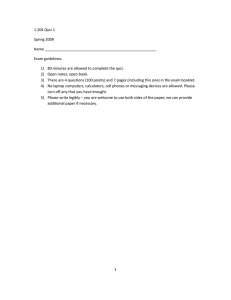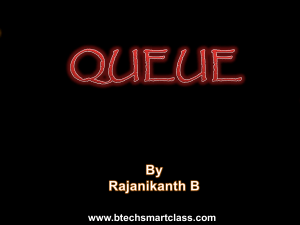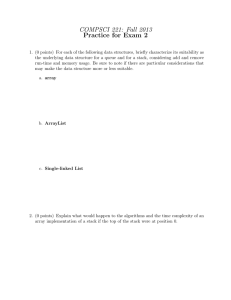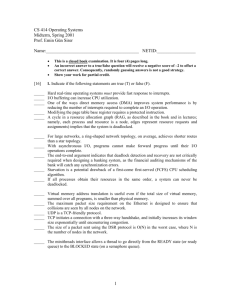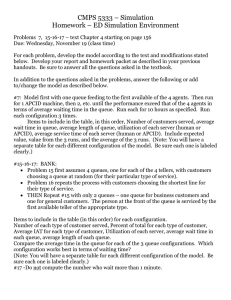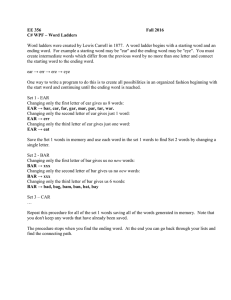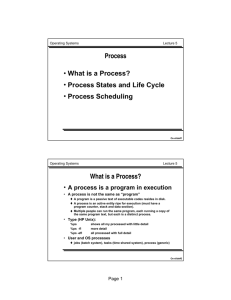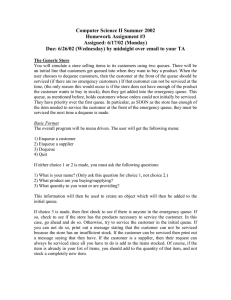QueuesCircular
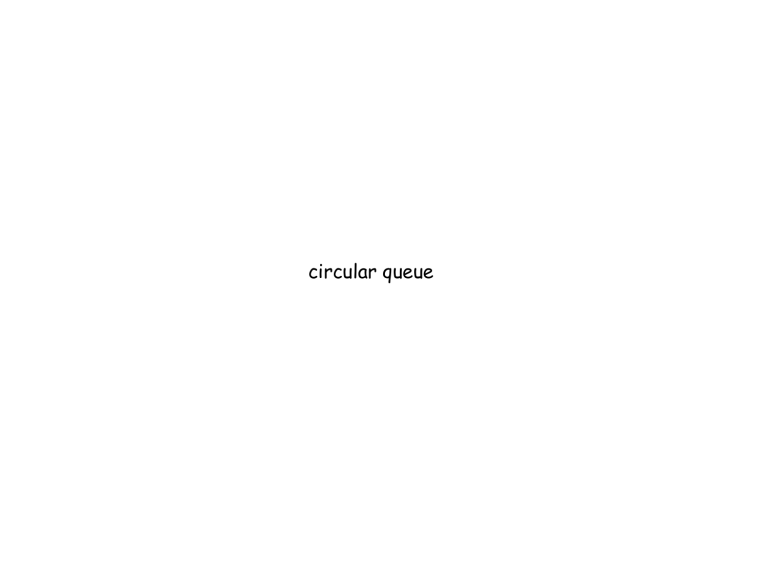
circular queue
Array-based Queue
• Use an array of size
N in a circular fashion
• Three variables keep track of the front, rear, and size f index of the front element r index immediately past the rear element, where we add new elements (enqueue)
size is number of entries in the queue
Array-based Queue
• Use an array of size
N in a circular fashion
• Three variables keep track of the front, rear, and size f index of the front element r index immediately past the rear element, where we add new elements (enqueue)
size is number of entries in the queue normal configuration
Q
0 1 2 f wrapped-around configuration r
Q
0 1 2 r
ADS Lecture 11 f
3
Queue Operations
• We use the modulo operator (remainder of division)
• Operation enqueue throws an exception if the array is full
This exception is implementation-dependent
Q
0 1 2 f r
Q
0 1 2
Algorithm size () return size
Algorithm isEmpty () return size == 0 r f
Algorithm enqueue ( o ) if size () = N then throw FullQueueException else
Q [ r ]
o r
( r + 1) mod N update size!
size++
4
ADS Lecture 11
Queue Operations (cont.)
• Operation dequeue throws an exception if the queue is empty
• This exception is specified in the queue ADT
Algorithm dequeue () if isEmpty () then throw EmptyQueueException else o
Q [ f ] f
( f + 1) mod N return o update size!
size--
Pros and cons of array based implementation:
Again: quick and easy, all methods run in constant time
But again, need good idea of capacity a priori
ADS Lecture 11 5
Your mission


